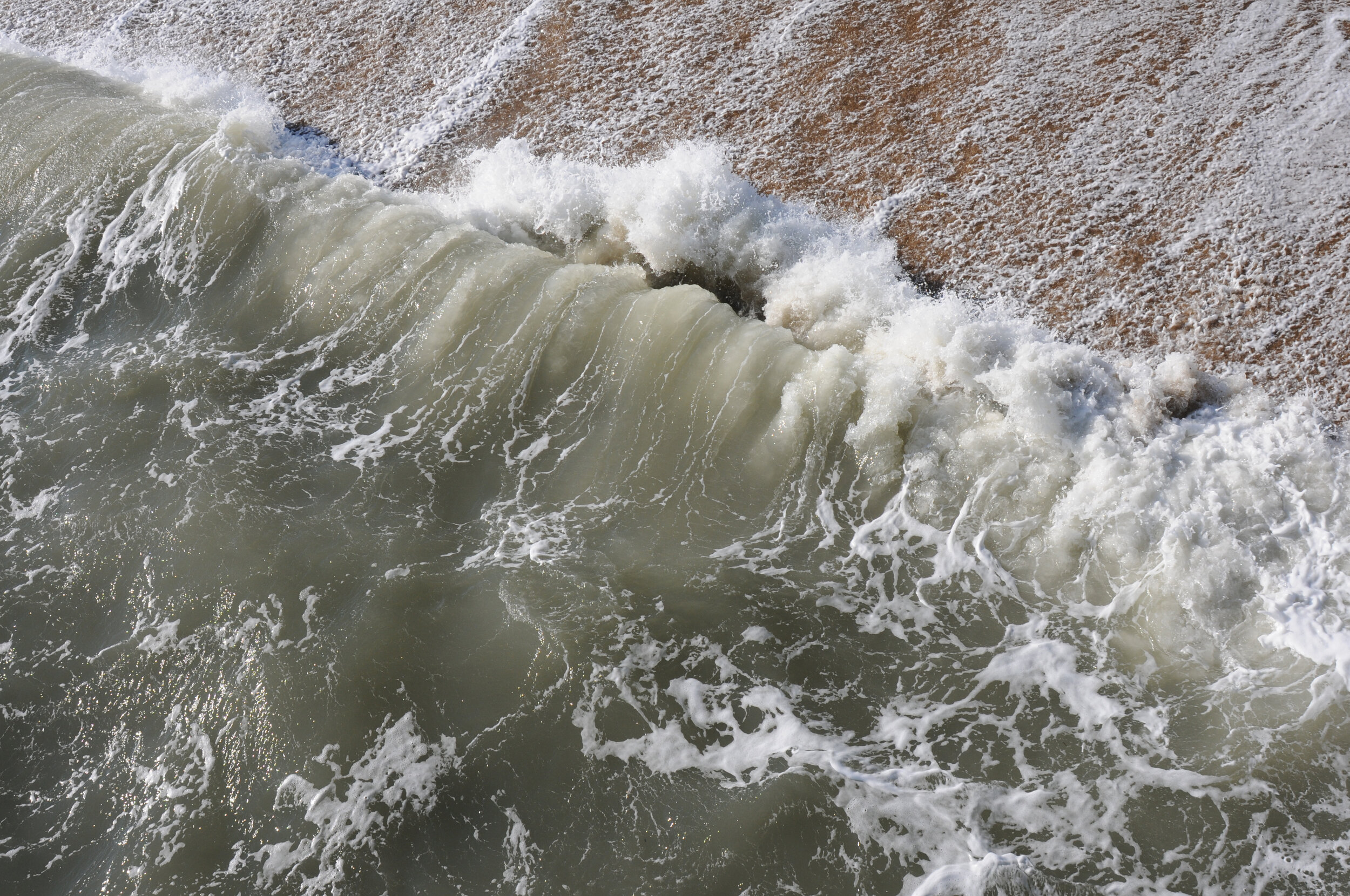Surf Zone Injury Predictions
A new UD study funded by Delaware Sea Grant looks at the links between environmental conditions and human behavior in the surf zone to predict days with high injury rates. Photo: Lisa Tossey
New UD study looks to improve forecasts for when beachgoers face greatest risk
From 2010 through 2017, more than 2,000 surf zone injury events, including 196 spinal injuries and six fatalities, were recorded at Delaware’s five most frequented beaches: Cape Henlopen State Park, Rehoboth Beach, Dewey Beach, Delaware Seashore Park and Bethany Beach. To help combat this problem, a group of University of Delaware researchers conducted a study looking at the links between environmental conditions and human behavior in the surf zone to predict days with high injury rates.
Research History
Jack Puleo, a professor in the Department of Civil and Environmental Engineering, has been conducting research on surf zone injuries for several years with the support of Delaware Sea Grant (DESG). A Marine Advisory Service extension agent with DESG, since retired, was the first to start looking at surf zone injuries after officials at the Beebe Medical Center in Lewes began noticing that surf zone related injuries were coming in from the beach in clusters: they would see lots of injuries one day and then not so many injuries for the next few days.
That initial investigation showed the issue was an ideal opportunity for the kind of in-depth research focused on community needs that is a hallmark of the Sea Grant program. Puleo stepped in to provide the academic expertise to study the surf zone injury processes comprehensively.
Puleo’s initial research produced two papers. The first looked at surf zone injuries and associated environmental conditions and the second characterized surf zone injuries from the five most populated beaches on the Atlantic-fronting Delaware coast.
To get the data for the papers, two undergraduate students lived at the beach and traveled to the five beaches where they surveyed the beach with GPS in order to calculate the slope, count the number of people in the water and put sensors in the water to measure wave heights and wave periods. That work continued with a Master’s level student and an undergraduate student who also kept track of men in the water versus women in the water to see if there was a gender discrepancy in terms of the injuries. They also surveyed people on the beach to try to understand their knowledge of coastal processes and their perceived level of risk.
Puleo explained that they originally wanted to do a straight correlation to understand the injuries, looking at statistics such as wave height and asking the question: when waves are bigger, do more people get hurt?
What they discovered, however, was that the topic was much more complex.
Bayesian Networks
To properly find the correlation to predict days with high injury rates, Puleo and his team used what’s known as a Bayesian Network, which uses probabilistic inference to make predictions using historical data.
“The easiest way to think about it is for something like wave height, you could say ‘Are the waves small, medium, or large? And is the air temperature warm, hot or really hot?’” said Puleo. “So you bin that the data and then you feed the data to the model where the model tries to draw inferences between when the injuries happened and when these other parameters were going up or down.”
They constructed two Bayesian networks for the study. The first predicted injury rate as it related to factors such as wave height, peak wave period and wind speed, among others. The second predicted injury likelihood on an hourly basis as a probability between zero and one, with one indicating at least one injury occurrence during a particular hour.
The research was published in the Natural Hazards scientific journal, with Matthew Doelp, a graduate student at the time of the study in Puleo’s lab, as the first author on the paper. Nathaniel Plant, center director for the United States Geological Survey St. Petersburg Coastal and Marine Science Center, was another key collaborator with Puleo and Doelp on the work. The injury rate model struggled to accurately predict when a surf zone injury would occur but worked well as a tool using parameters such as wave height, and foreshore slope to identify dangerous conditions. The second model performed well at identifying the hours of increased injury likelihood, but one thing that was hard for the models to deal with was the human factor.
“It’s weird because when I give presentations on this, I say, ‘Well, the injuries seem to occur more to tourists than locals.’ But still, locals do get injured,” said Puleo. “So, we are still working on appropriate ways to account for the human component in the model.”
Predictive model
Puleo said that in a perfect world, their work would be a predictive model, allowing life guards and beach patrols to know when conditions would suggest a high likelihood injury day.
“You can almost imagine a scenario where a lifeguard wakes up in the morning and says, ‘Ok, here’s what the conditions are predicted to be for today, let me see if today is predicted to be high, medium or a low likelihood injury day? Of course, that would require the application side of the research effort where a real-time model is developed’” said Puleo. “The benefit would be beach patrols may then be able to increase staff on the beach during a high likelihood of injury day or spend more effort discussing the hazardous conditions with beach goers.”
Overall, Puleo said the goal of the research is to reduce the number of injuries through education. He worked with Delaware Sea Grant to make a Surf Safety brochure that informs readers about understanding surf conditions and the safety precautions they can take. Puleo distributes the cards to coastal towns, local high school and elementary schools and has even had a real estate agent put them in their beach rental properties.
“We’ll continue to do that in the future to help reduce the injury risk,” said Puleo. “It’s not going to happen that people are never going to get injured. It’s just impossible. But if we can stop one less person from breaking their neck at the beach or having a severe spinal injury, that’s effort well done.”
Article by Adam Thomas

